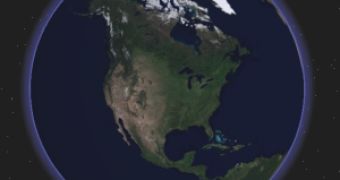Microsoft Virtual Earth is a mission-critical geospatial and mapping platform and in this context it should be no surprise that the U.S. government is interested in the product. The Redmond company has applauded a new agreement inked with the U.S. Environmental Protection Agency (EPA), for the licensing of Virtual Earth. EPA aims to leverage the Virtual Earth platform for its own set of geospatial and mapping applications addressed at government customers. The initiative is designed to provide enhanced data sharing, analysis and insight to EPA's partners and Microsoft was more than happy to play along.
"Before we selected Microsoft's Web-based Virtual Earth, the EPA relied on more expensive and cumbersome desktop applications," said Pat Garvey, manager of the Facility Registry System at the EPA. "Our goal was to provide our customers a consistent, richer user experience. We can do that with Virtual Earth because its performance and imagery make it easy for us to focus on our core environmental-data and mission applications."
"We're thrilled to be partnering with the EPA to deliver the agency's common operational mapping platform through a combination of Software plus Services," said Curt Kolcun, vice president of the Federal Division at Microsoft. "The EPA, like other agencies, is looking for ways to build citizen-facing applications around a geospatial core with the ultimate goal of better connecting Americans with their government."
Virtual Earth is essentially advertised by Microsoft as a common operational platform and this context makes no exception. In this manner, the Redmond company sees its vision of Virtual Earth becoming a layer for the addition of third party data and applications, coming to life. In order to streamline such scenarios Microsoft even made available a single application programing interface for Virtual Earth to developers. And of course at the basis of the offering an extensive collection of satellite, aerial, oblique and 3-D imagery of the Earth is to be found.

 14 DAY TRIAL //
14 DAY TRIAL //